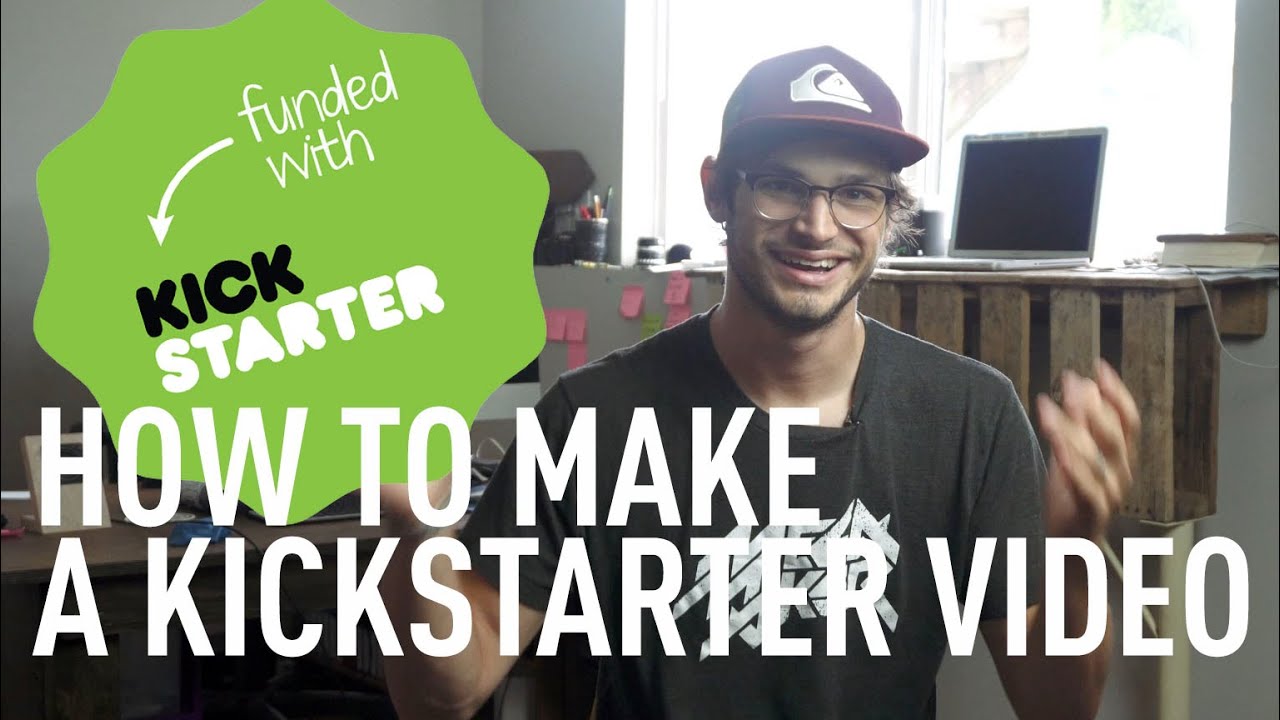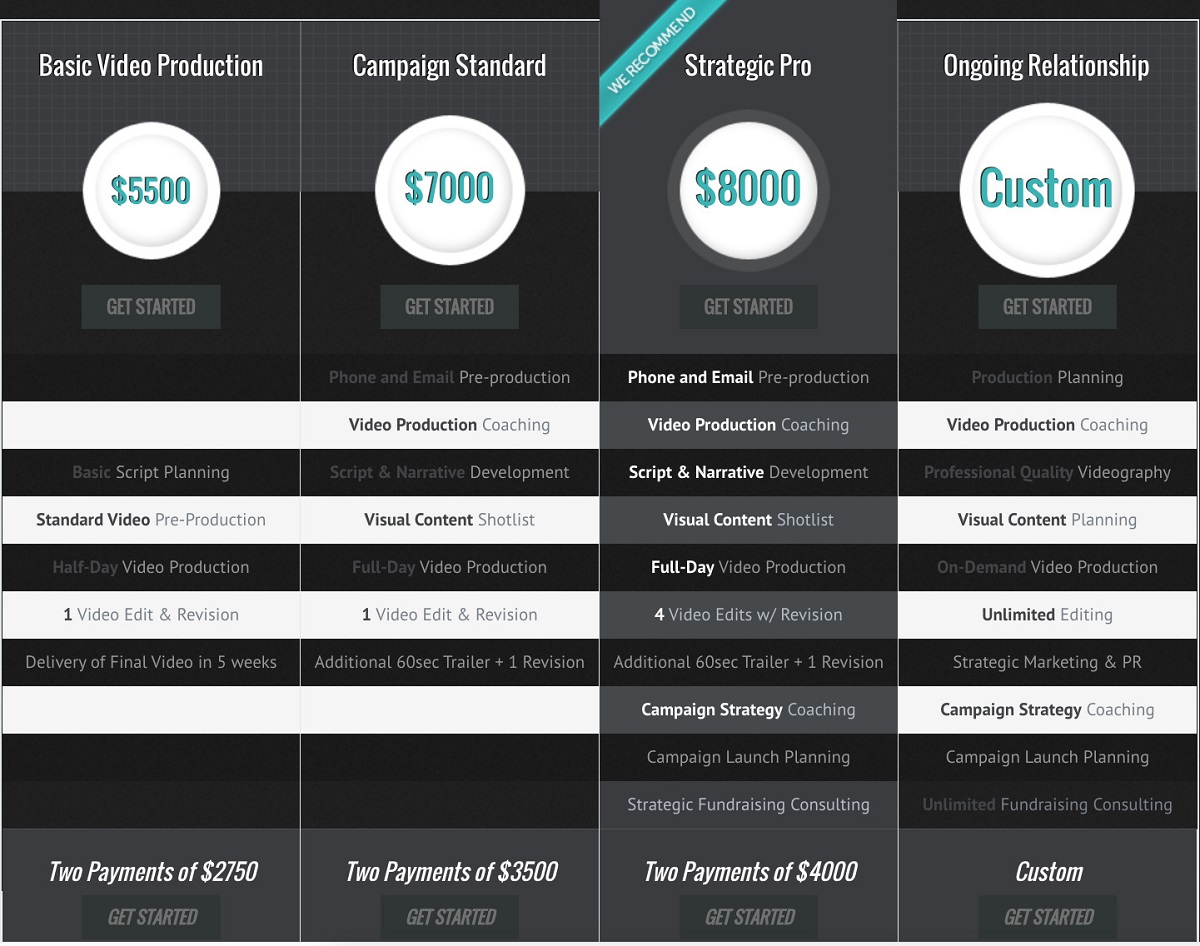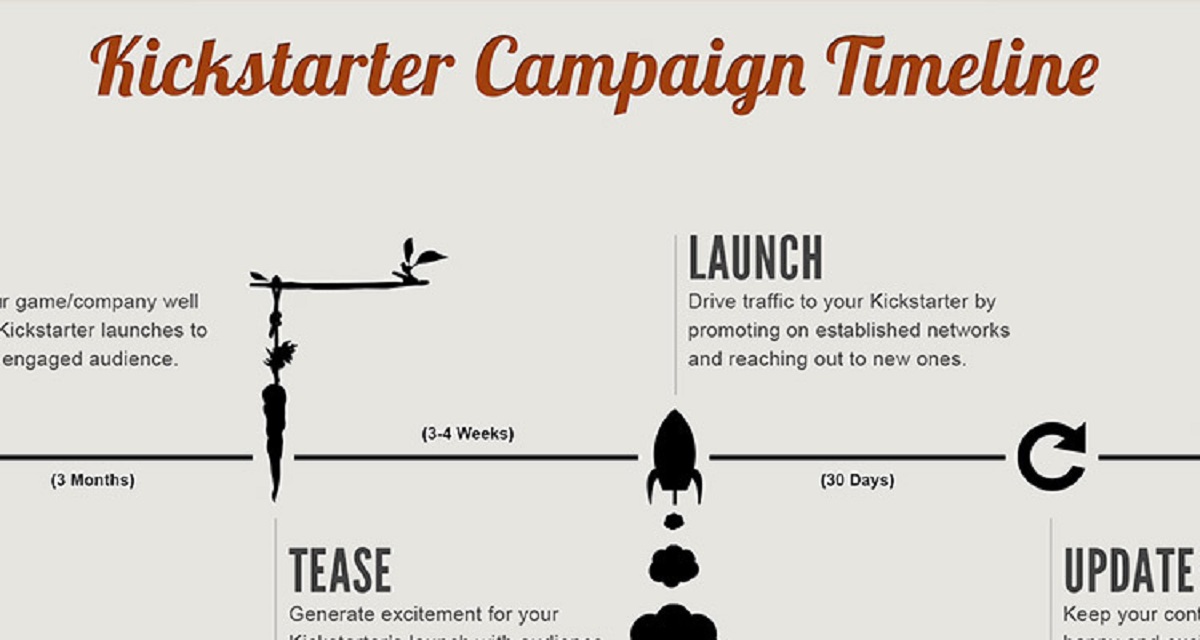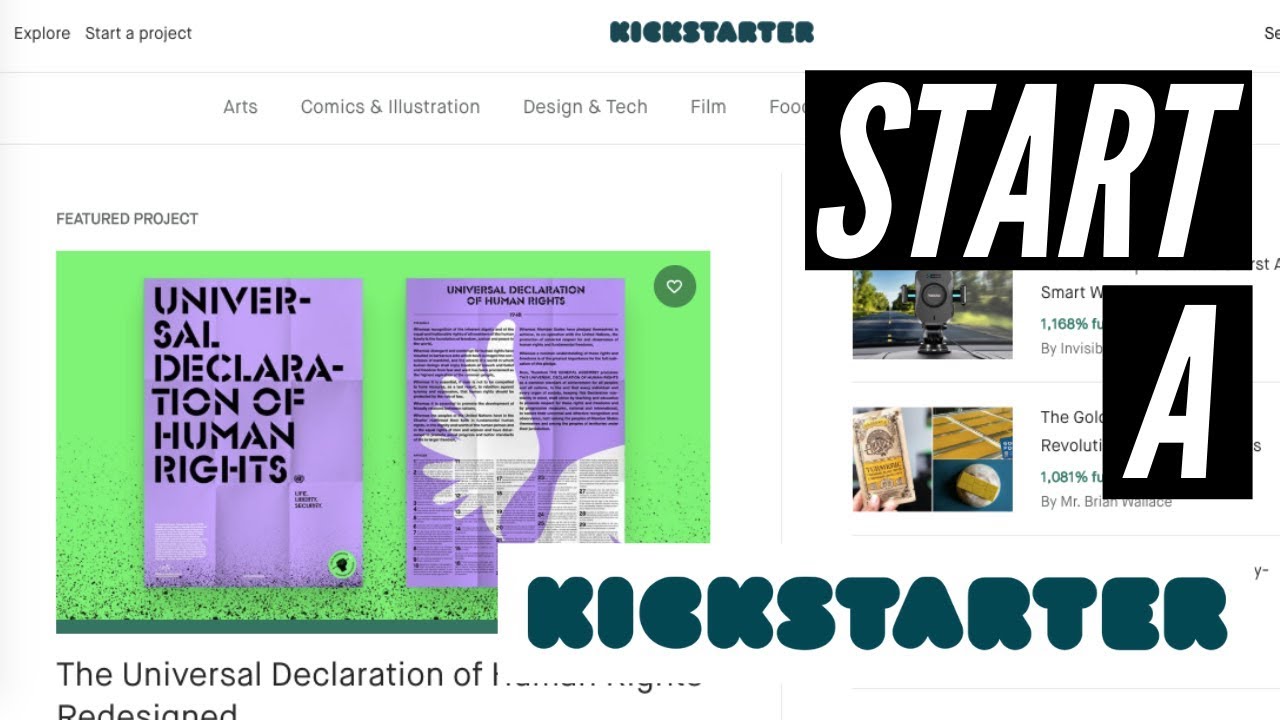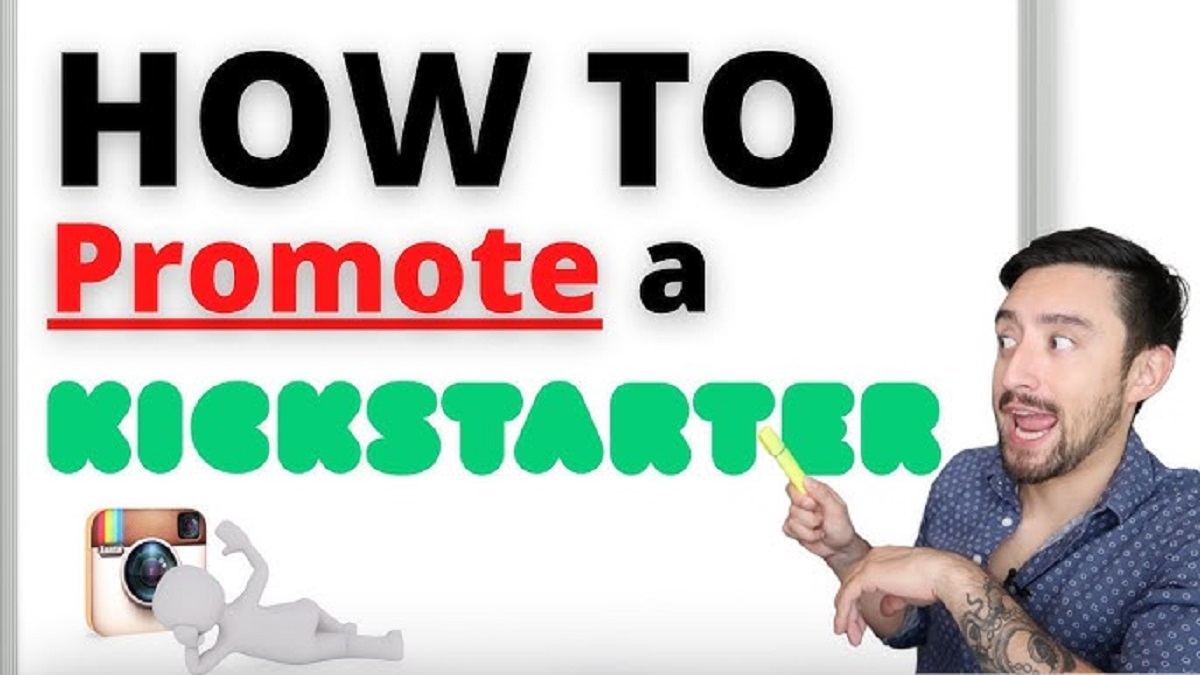Introduction
Launching a Kickstarter campaign can be an exciting endeavor, but one of the key elements to its success is creating a compelling video that grabs the attention of potential backers. A well-crafted Kickstarter video has the power to engage and persuade viewers, turning them into enthusiastic supporters of your project.
However, creating an effective Kickstarter video is not just about pointing a camera and talking about your project. It requires careful planning, creative scriptwriting, proper equipment, and the skills to capture quality footage. In this article, we will guide you through the process of making a Kickstarter video that leaves a lasting impression.
Before diving into the technical details and practical tips, it’s important to understand the purpose of your Kickstarter video. It serves as the initial introduction to your project, showcasing its unique selling points and inspiring potential backers to invest in your idea. Your video should convey the passion and authenticity behind your project, building trust with your audience while highlighting the value and impact of your offering.
In order to produce a high-quality Kickstarter video, careful planning is crucial. Start by defining your target audience and identifying their specific needs and interests. This will help you tailor your message and visuals to resonate with the right people. Additionally, researching successful Kickstarter campaigns in your niche can provide valuable insights and inspiration for your own video.
Next, consider the length of your video. A concise and engaging video that is under three minutes tends to perform better. It’s important to capture your viewers’ attention from the start by showcasing your project’s unique features and benefits. Avoid lengthy introductions or excessive background information that may lose the interest of your audience.
In the following sections, we will delve into the essential steps of creating an impressive Kickstarter video. From scriptwriting to equipment set-up, lighting, sound recording, visual effects, and editing, we will provide you with the knowledge and tips you need to bring your video to life. Let’s dive in and make your Kickstarter campaign a resounding success!
Planning your Kickstarter Video
Your Kickstarter video is the first impression potential backers will have of your project, so careful planning is essential. Here are some key steps to consider when mapping out your video:
- Identify your campaign goals: Clearly define what you aim to achieve with your Kickstarter campaign. Whether it’s funding for a new product, a creative project, or a social cause, your video should align with these goals.
- Know your target audience: Research your target audience’s demographics, interests, and pain points. This will help you tailor your video’s messaging and visuals to resonate with them on a deeper level.
- Create a compelling story: Craft a narrative that captivates your viewers from the beginning. Highlight the problem your project solves or the impact it will make, and showcase the journey that led you to create it. Emotionally engaging storytelling is key.
- Determine your video’s structure: Decide on the flow and structure of your video. Consider including an attention-grabbing hook, introducing your project, showcasing its features and benefits, and closing with a strong call to action.
- Storyboard your video: Create a visual storyboard to plan out the shots and camera angles you’ll use. This will help you visualize how your video will unfold and ensure you capture the necessary footage.
- Select the right location: Choose a location that reinforces your project’s message and fits the tone of your video. Whether it’s a studio, a scenic outdoor spot, or your workspace, make sure the environment enhances your video’s story.
- Plan for props and visuals: If your project involves physical products or visual elements, make sure to include them in your video. Show how they work, their quality, and any unique features they offer.
- Consider testimonials or demonstrations: Incorporating testimonials from satisfied customers or experts in your field can add credibility to your project. If applicable, demonstrate your project’s functionality to further convince viewers of its value.
Remember, a well-planned Kickstarter video sends a strong message about your project and increases the chances of attracting backers. Take the time to strategize and refine your approach before diving into production. In the next section, we will explore the intricate process of scriptwriting for a Kickstarter video.
Scriptwriting
The script for your Kickstarter video is the backbone of your message. It shapes the story you want to tell and guides your delivery. Here are some key considerations for effective scriptwriting:
- Start with a compelling hook: Grab your viewers’ attention from the very beginning with a hook that sparks curiosity or emotion. This could be a powerful statement, a thought-provoking question, or an intriguing visual.
- Clearly articulate the problem: Clearly communicate the problem or need that your project addresses. Help your viewers understand the pain point and why it matters.
- Showcase your solution: Introduce your project as the solution to the problem. Highlight its unique features, benefits, and how it differentiates from existing alternatives. Make it clear why your project is worth supporting.
- Use a personal and relatable tone: Connect with your viewers on an emotional level by using language that is relatable and authentic. Share personal stories or anecdotes that demonstrate your passion and commitment.
- Include social proof: Incorporate testimonials or endorsements from satisfied customers, industry experts, or influencers to build credibility and trust. Their positive experiences can help convince viewers of the value of your project.
- Create a sense of urgency: Encourage viewers to take action by creating a sense of urgency. Offer limited-time rewards, exclusive early access, or bonuses for those who back your project within a specific timeframe.
- Make a compelling call to action: End your video with a strong call to action that clearly directs viewers to back your project. Use persuasive language and make it easy for them to contribute by providing a clear link or instructions.
When writing your script, keep it concise and engaging. Avoid being overly technical or using jargon that may confuse or alienate viewers. Use conversational language and ensure the script flows smoothly from one section to the next.
Once you have a draft of your script, practice delivering it with genuine enthusiasm. Rehearse until you feel confident and natural on camera. Consider seeking feedback from others to refine your delivery and make necessary adjustments to the script.
The script is a crucial element in conveying your project’s value and inspiring potential backers. Take the time to craft a powerful and persuasive script that effectively communicates your message. In the next section, we will explore the equipment and set-up needed to create a professional-looking Kickstarter video.
Equipment and Set-up
To create a professional-looking Kickstarter video, you’ll need the right equipment and a well-planned set-up. Here are some key considerations for equipment and set-up:
- Camera: Invest in a good quality camera that can capture high-resolution video. While a DSLR or mirrorless camera can provide excellent image quality, modern smartphones can also produce impressive results.
- Tripod or stabilizer: Use a stable camera support system, such as a tripod or a handheld stabilizer, to prevent shaky footage and ensure smooth movements.
- Microphone: Clear audio is crucial for a professional video. Consider using an external microphone, such as a lavalier or shotgun mic, for improved sound quality.
- Lighting: Proper lighting helps create a visually appealing video. Utilize natural light whenever possible or invest in basic lighting equipment, such as softboxes or LED panels, to illuminate your scenes effectively.
- Backdrop: Choose a clean and appropriate backdrop that enhances your project. A plain wall, a branded banner, or a well-arranged set can create a professional look and eliminate distractions.
- Props and visuals: Make sure you have all the necessary props and visuals ready for your video. Clean and present them in an organized manner to showcase your project in the best light.
- Positioning and framing: Consider the composition and framing of your shots. Rule of thirds, leading lines, and balanced composition can create visually pleasing and engaging footage.
- Test and adjust: Before recording, test your equipment, lighting, and sound to ensure everything is working properly. Make any necessary adjustments to achieve the desired result.
Remember that while having high-quality equipment can enhance the overall production value, it’s not the sole factor that determines the success of your Kickstarter video. Lighting, sound, and composition are equally important in creating a professional and engaging video.
Consider your project’s tone and style when choosing equipment and set-up. If your project is more casual or documentary-style, a handheld approach with natural lighting could work. For a more polished or cinematic look, invest in additional equipment and set-up to ensure a visually captivating video.
Once you have your equipment and set-up ready, you’re one step closer to creating a visually appealing Kickstarter video. In the next section, we will explore how to optimize lighting and cinematography to capture the best possible footage.
Lighting and Cinematography
Lighting and cinematography play a crucial role in creating a visually compelling Kickstarter video. Proper lighting enhances the overall visual quality, while cinematography techniques help convey emotions and tell your story effectively. Here are some key considerations for lighting and cinematography:
- Natural lighting: If possible, utilize natural light as your primary light source. Position yourself or your subject near windows or in well-lit areas to take advantage of soft, diffused lighting.
- Artificial lighting: If natural light is not sufficient or available, invest in basic lighting equipment such as softboxes or LED panels. Place the lights strategically to create a well-balanced and visually pleasing scene.
- Three-point lighting: Consider using a classic three-point lighting setup consisting of a key light, fill light, and backlight. This technique helps to create depth, emphasize features, and separate your subject from the background.
- Color temperature: Pay attention to the color temperature of your lighting sources. Ensure that all lights have the same color temperature or adjust them accordingly to avoid unwanted color casts.
- Composition and framing: Experiment with different compositions and framing techniques to create visually interesting shots. Utilize the rule of thirds, leading lines, and depth to add depth and engage viewers.
- Camera movement: Consider employing camera movements, such as pans, tilts, or tracking shots, to add dynamism and visual interest to your video. However, use them sparingly and in a purposeful manner to avoid overwhelming your viewers.
- Focus and depth of field: Use focus creatively to draw attention to specific elements within your frame. Experiment with shallow or deep depth of field to achieve the desired aesthetic and impact.
- Visual storytelling: Remember that cinematography is more than just technical aspects; it is a visual language that can evoke emotions and tell stories. Think about the mood and tone you want to convey and use cinematography techniques to support that narrative.
Keep in mind that good lighting and cinematography should enhance your project and support its message, not overshadow it. Strike a balance between technical proficiency and artistic storytelling to create an engaging and visually stunning Kickstarter video.
Take the time to plan your lighting and cinematography setup before shooting. Experiment with different lighting arrangements and camera angles to find the best visual representation of your project. In the next section, we will explore sound recording techniques to ensure high-quality audio for your Kickstarter video.
Sound Recording
High-quality audio is essential for a professional Kickstarter video. Clear and crisp sound ensures that your message is delivered effectively and enhances the overall viewing experience. Here are some key considerations for sound recording:
- Choose the right microphone: Invest in a good quality microphone to capture clear and professional-grade audio. Consider using a lavalier microphone for interviews or a shotgun microphone for capturing ambient sound.
- Minimize background noise: Find a quiet location for recording to minimize unwanted background noise. Close windows, turn off fans or air conditioners, and inform others in the vicinity to keep noise levels to a minimum.
- Use wind protection: If recording outdoors or in a windy environment, utilize a windscreen or a furry wind cover to reduce wind noise interference in your audio recordings.
- Monitor audio levels: Keep an eye on the audio levels while recording to ensure that they are not too low or too high. Avoid clipping, which occurs when the audio peaks and results in distorted and unusable sound.
- Test and adjust audio settings: Before recording, test your audio equipment and adjust the settings to achieve optimal sound quality. Pay attention to microphone sensitivity, gain levels, and any built-in filters or equalizers.
- Record ambient sound: If appropriate for your project, consider capturing ambient sound to add depth and realism to your video. This can be background noises, such as nature sounds or the hustle and bustle of a busy location.
- Consider voice-over: If you want to add narration or voice-over to your video, record it separately in a controlled environment to ensure clear and distraction-free audio.
- Use music and sound effects: Enhance your video with appropriate background music or sound effects. Make sure to use royalty-free or licensed audio tracks to avoid copyright issues.
Remember that good sound recording is just as important as visual quality. Poor audio can significantly impact the viewer’s experience and perception of your project. Taking the time to ensure proper sound recording will greatly enhance the overall quality of your Kickstarter video.
Test your audio equipment, monitor the audio levels, and check for any unwanted noise before recording. Consider enlisting the help of a sound engineer or experienced audio technician if you’re unsure about the technical aspects of sound recording.
In the next section, we will explore the use of visual effects and editing techniques to enhance the impact of your Kickstarter video.
Visual Effects and Editing
Visual effects and editing are essential components in creating a polished and professional Kickstarter video. They allow you to enhance the visual appeal, refine the pacing, and tell your project’s story in a compelling way. Here are some key considerations for visual effects and editing:
- Smooth transitions: Use smooth and seamless transitions between shots to maintain a cohesive flow and keep viewers engaged. Avoid jarring cuts or abrupt changes that may disrupt the viewing experience.
- Color correction and grading: Enhance the visual aesthetics of your footage by applying color correction and grading techniques. Adjust the colors, contrast, and saturation to achieve a visual style that aligns with your project’s tone.
- Text and graphics: Incorporate text overlays, titles, and graphics to provide context, highlight key information, or add visual interest. Use readable fonts and attractive design elements to ensure they complement the overall style of your video.
- Visual effects: Consider adding visual effects or animations to enhance specific moments in your video. Use them sparingly and purposefully, ensuring they contribute to the storytelling and do not distract from the main message.
- Audio editing: Trim and adjust audio clips to ensure a seamless and balanced sound mix. Remove any unwanted background noise or audio imperfections that may detract from the overall quality of the video.
- Storyboard-based editing: If you created a storyboard during the planning stage, refer back to it when editing. This will help ensure that the visual sequence aligns with the narrative and that key moments are captured effectively.
- Pacing and timing: Create a dynamic and engaging rhythm by carefully selecting the length and timing of your shots. Consider the emotional impact you want to convey and adjust the pace accordingly.
- Use of B-roll footage: Incorporate B-roll footage to supplement your main shots and add visual interest. B-roll can provide additional context, showcase your project in action, or highlight specific features.
When it comes to editing, be mindful of the overall length of your video. Keep it concise and captivating, ensuring that each scene and transition serves a purpose and contributes to the storytelling.
Take advantage of video editing software, such as Adobe Premiere Pro or Final Cut Pro, to add visual effects, adjust colors, and finesse your footage. Experiment with different techniques and styles to find what works best for your project.
Once you’ve completed the editing process, review your video several times to ensure a seamless flow and address any technical or visual issues. Consider seeking feedback from others to gain fresh perspectives and make necessary refinements.
In the next section, we will provide some valuable tips for creating a compelling Kickstarter video that captures the attention of potential backers.
Tips for a Compelling Video
Creating a compelling Kickstarter video requires attention to detail and a creative approach. Here are some valuable tips to help you produce a video that captivates and convinces potential backers:
- Be authentic: Show genuine enthusiasm and passion for your project. Let your personality shine through and connect with your audience on a personal level.
- Keep it concise: Capture the viewer’s attention quickly and maintain their interest throughout your video. Aim for a video duration of under three minutes to ensure viewers stay engaged.
- Showcase the benefits: Clearly communicate the benefits and value of your project. Highlight how it solves a problem, improves lives, or offers something unique.
- Use visuals effectively: Utilize visuals that are visually appealing, engaging, and relevant to your project. Show your product or project in action and use shots that evoke emotions.
- Address potential concerns: Anticipate and address any potential concerns or objections that viewers may have. Provide clear and concise answers to build trust and confidence.
- Include a strong call to action: End your video with a clear and compelling call to action. Encourage viewers to support your project and provide a direct way for them to get involved.
- Use testimonials or case studies: Incorporate testimonials from satisfied customers or case studies that demonstrate the success or positive impact of your project. This adds credibility and reassurance.
- Inject emotion: Engage viewers on an emotional level by sharing stories, personal experiences, or testimonials that evoke feelings and connect with their values and aspirations.
- Keep it focused and organized: Structure your video in a logical and organized manner. Clearly outline the purpose, progress, and future plans of your project.
- Don’t forget about sound: Pay equal attention to sound quality. Ensure clear audio, proper mixing, and an appropriate background music or sound effects that complement the visuals.
Remember that the purpose of your Kickstarter video is to inspire and persuade viewers to back your project. Craft a compelling narrative, present your project’s unique selling points, and create an emotional connection with your audience.
Finally, don’t overlook the importance of promoting and distributing your video. Share it on social media, reach out to online communities, and leverage your network to maximize exposure and increase the chances of attracting potential backers.
By implementing these tips, you can create a powerful and persuasive Kickstarter video that showcases the value of your project and motivates viewers to support it.
Promotion and Distribution
Creating a compelling Kickstarter video is just the first step in your crowdfunding journey. To ensure its success, you need to actively promote and distribute your video to reach a wider audience. Here are key strategies for effective promotion and distribution:
- Share on social media: Use your social media platforms to share your Kickstarter video with your existing audience. Craft engaging captions and utilize relevant hashtags to maximize visibility and encourage sharing.
- Engage with online communities: Identify online communities and forums that align with your project’s niche and actively participate in discussions. Share your video where appropriate, providing valuable insights and building credibility.
- Reach out to relevant influencers: Identify influencers or individuals with a large following who may be interested in your project. Personalize your outreach and invite them to view and share your video with their audience.
- Optimize for search engines: Use relevant keywords and tags in your video title, description, and metadata to improve its visibility in search engine results. Consider using SEO techniques to increase your video’s chances of being discovered.
- Create a landing page: Design a dedicated landing page on your website that features your video, project details, and a clear call to action. Link to this page in your promotional efforts to provide interested viewers with a centralized place to learn more and back your project.
- Reach out to your network: Personally reach out to friends, family, colleagues, and acquaintances to inform them about your Kickstarter video. Encourage them to watch, share, and spread the word to their networks.
- Collaborate with complementary projects: Identify other Kickstarter campaigns or projects that align with yours and explore opportunities for cross-promotion. This can extend your reach to new audiences who may have an interest in your project as well.
- Utilize email marketing: Leverage your email list to share updates about your Kickstarter campaign, including the video. Craft engaging and informative emails with a clear call to action, encouraging recipients to watch and support your project.
- Run targeted advertising campaigns: Consider investing in targeted online advertising to reach a broader audience. Platforms like Google Ads or social media ads can help you reach users who may not have discovered your project otherwise.
Remember that promotion and distribution go hand in hand. Continuously monitor and analyze the performance of your promotional efforts to identify what’s working best and adjust your strategy accordingly. Stay engaged with your audience, respond to comments and questions, and express gratitude to backers who support your project.
By implementing these strategies, you can increase the visibility and reach of your Kickstarter video, attracting more potential backers and increasing the chances of reaching your funding goal.
Conclusion
Creating a compelling Kickstarter video requires careful planning, creative execution, and effective promotion. By following the steps outlined in this article, you can produce a video that engages viewers, communicates the value of your project, and inspires them to become backers.
Start by planning your video, understanding your target audience, and crafting a captivating script. Pay attention to the equipment and set-up to ensure high-quality visuals and audio. Use lighting and cinematography techniques to enhance the aesthetics, and optimize sound recording for clear and professional audio.
When it comes to post-production, utilize visual effects and editing to refine your footage and create a cohesive and visually appealing video. Then, implement promotion and distribution strategies to maximize the reach and visibility of your video, leveraging social media, influencers, online communities, and your own network.
Throughout the process, remember the importance of authenticity, storytelling, and emotional connection. Let your passion for your project shine through and continually engage with your audience to build trust and excitement.
By combining all of these elements, you’ll have a powerful Kickstarter video that showcases the value of your project and motivates viewers to support it. Best of luck on your crowdfunding journey!







